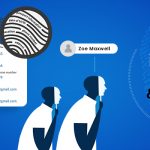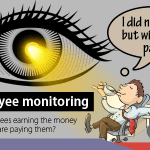Business organizations monitor their employees for a host of valid reasons. From evaluating individual performances to identifying potential issues and security threats, mapping out career paths, and paying employees the right amount for the work they delivered, the need to monitor your workers is justified from various perspectives.
New developments in the technological front and emerging workforce trends demand that business organizations entirely reinvent their approach to employee monitoring. Having the best computer monitoring software is excellent. But the rise of the mobile workforce, the entry of Generation Z to the labor sector, the looming danger posed by insider threats, and more drive the need for enhanced employee monitoring solutions, practices, and standards built on new and disruptive technologies.
Let’s dive in for a closer look at these impactful trends.
-
Remote Workforce is Not a Fad
Technological advances on different fronts have combined with the mobile workforce trend. Once eschewed by business organizations until a few years back, employing remote workers and teams are now seen as necessary, especially with the benefits the practice brings to the big picture.
A 2019 survey by Airtasker revealed that remote workers are more productive in their tasks than office-based employees. The study found that employees who work in the office lose 37 minutes daily to unproductive activities—in contrast, mobile employees’ fruitless minutes tallied to an average of 27 minutes per day. This results in remote employees working longer, 21.9 days a month, as opposed to the 20.5 days rendered by those in the office.
It’s a growing trend with no signs of stopping. In the United States, there were 3.9 million remote workers in 2015. Recent telecommuting statistics show that the figure is now at 4.3 million. Data analysts from the labor sector predict massive growth in the coming years.
As this trend continues to roll and become a permanent standard for many industries, there will be heavy pressure on software developers and vendors to deliver comprehensive remote employee monitoring solutions with advanced capabilities that can scale upon demand.
-
More Gen Z Members Becoming Workers
Generation Z is going to impact the workforce in so many ways. Gen Z-ers, or those born between 1995 and to mid-2000s, are poised to take 24% of the global workforce by 2020, according to the Manpower Group.
Unlike Millennials, Gen Z-ers are expected to be more educated, financially driven, and competitive. Born into the digital age where knowledge is a valuable asset, Gen Z-ers actively seek information. They are open to learning new things, especially those they see as instrumental or beneficial to their personal and professional growth.
Gen Z workplace statistics revealed that 65% of Gen Z-ers don’t mind being monitored at work. Employers can implement strict workplace monitoring practices like installing an employee screen monitoring software on every worker’s desktop or laptop, and Gen Z-ers will be okay with that. In addition, 67% are comfortable whenever managers check in on them, asking about their tasks or seeing if they need guidance or advice.
Experts urge potential employers to anticipate their needs because of the advantages they bring. Gen Z-ers have huge value potential. Companies must utilize all technologies and resources to exact the most value from their Gen Z employees, provided everything is transparent. Gen Z-ers are assured such actions equate to their development and career advancement.
-
Increasing Risks of Insider Threats
The main problem in addressing insider threats is that their tactics keep evolving. As soon as organizations manage to identify and fix the flaws in their cybersecurity systems, bad actors and hackers find new weak points to exploit. For years, it has been a game of catch-up, and cyber criminals manage to stay steps ahead.
Left unchecked, bad actors within your organizations, such as rogue employees and insider agents, can steal sensitive customer information, leak trade secrets to the highest bidder, download ransomware, and post malicious and fraudulent content. In 2019, insider-related events cost companies an average of $1.62 million worldwide, a considerable jump from 2018’s average of $1.41 million.
That said, security experts urge companies that while they need to keep their digital protection solutions constantly updated, an equal amount of vigilance and focus should be directed at their employees.
According to the 2018 Verizon Data Breach Investigations Report, careless employees and partners rank as the leading cause of data breaches and cybersecurity incidents. Security issues stem mainly from their disregard for established policies and work standards, downloading and installing unauthorized applications, mishandling company accounts, un-secure access and transfer of company data, and more.
Experts recommend business organizations complement their cybersecurity systems with integration-ready employee monitoring, identity access management, and device management platforms. Creating a solid framework that covers preparation, mitigation, detection, and response is essential in quelling more insider-related incidents in the future.
-
Getting on the BYOD Train
Bring Your Device, or BYOD, is a workplace trend poised to stay. The advantages stemming from the said practice area parents can be justified convincingly by employers and employees.
For organizations, the benefits include significant operational savings and highly productive workers. Companies don’t have to invest in desktops, laptops, and other office equipment. They don’t have to issue mobile devices to their workers. A study by Cisco found that employers that allow workers to use their devices for work save $350 per employee annually. That’s substantial savings on any company payroll.
For workers, the familiarity of their devices and the use of their tech allow them to work at a more effective rate. For example, their laptops and smartphones enable employees to perform tasks even after office hours.
However, critics point out various flaws with the growing BYOD trend. First, endpoint devices are highly vulnerable to viruses, ransomware, malware, phishing emails, and insider threats. Because of the interconnectivity between social media apps and websites, laptops, and smartphones are prime targets for hackers and cybercriminals.
But despite loud and vocal opposition, BYOD continues gaining traction across multiple industries, and there is no stopping this particular train.
That said, security concerns are valid. As a result of the BYOD trend and the challenges it presents, companies need to invest in a platform that combines employee monitoring, device management, and information access management.
Hesitation in joining the BYOD revolution is understandable. But considering the benefits it brings, employers must seek ways to capitalize on this while proactively minimizing its risks.
Improve Employee Monitoring with Tech Revamp
Conventional types of employee monitoring are no longer adequate to help employers meet the rising challenges presented by these impactful workforce trends. Therefore, it is high time for business organizations to review their employee monitoring guidelines, technologies, and processes, identify areas that require significant changes and seek ways to adopt and integrate new technologies to fully improve they’re to improve their employee monitoring strategies entirely, adding new technologies to their employee monitoring approach, companies can fully maximize the benefits of employee monitoring. These include total visibility into all your employees’ activities, increased productivity, accurate calculation of payroll, and wholly compliant workers who operate within your organization’s policies and standards.








